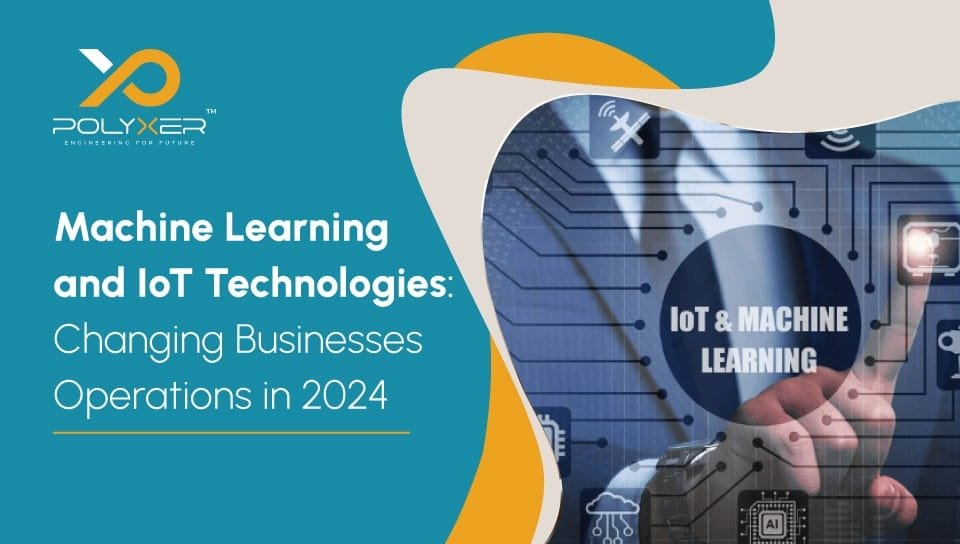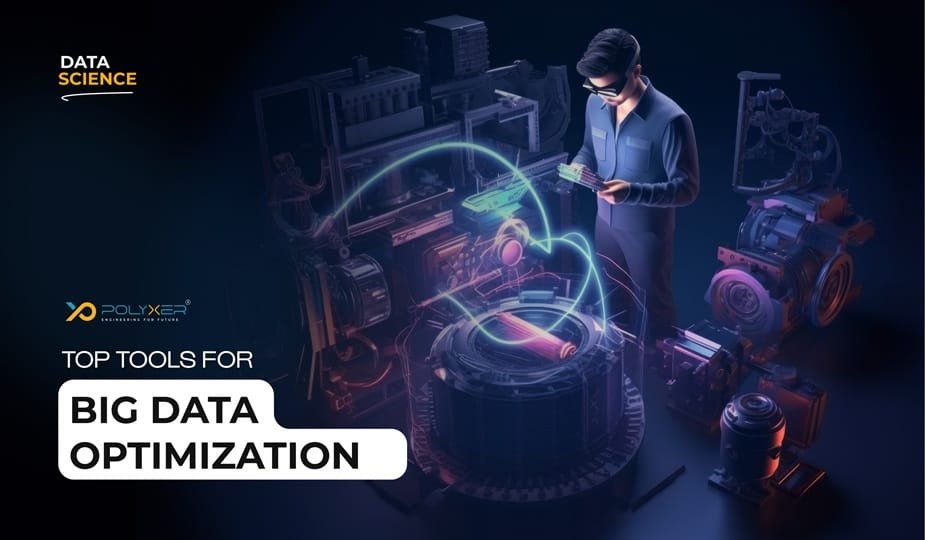
Top 5 Machine Learning Tools for Software Development in 2024

Vue.Js Integrated with .Net Core: A Modern Web Development in 2024
The digital transformation in businesses is now only limited to our imagination. The ever-changing context of technology is predicted to leap in 2024.
While businesses brace for the next advanced technological waves, the Internet of things and machine learning technologies have already started making a great deal. These technologies are envisioned to uphold the rapid evolution in 2024.
The top organizations have begun to adopt machine learning for their IoT platforms and devices. We ensure you get the right approach to your business success with these trending topics in 2024.
Witness the change in business operations in 2024 with advancements in technology, how?
This blog will help you out!
Introduction to IoT and Machine Learning
The Internet of Things (IoT) and machine learning (ML) are two of the most transformative technologies of our time. They are rapidly changing the way we live, work, and interact with the world around us.
The Internet of Things (IoT) and machine learning (ML) stand as two revolutionary technologies shaping the landscape of our modern era. In a world where connectivity and intelligence converge, IoT and ML are not just innovations; they are the architects of a new way of life, redefining how we live, work, and engage with the world around us.
What is IoT(Internet of Things)?
The Internet of Things (IoT) refers to the network of physical devices embedded with sensors, software, and other technologies that allow them to connect and exchange data with each other over the Internet. These devices can range from simple everyday objects like thermostats and light bulbs to more complex industrial machines and medical devices.

What is Machine Learning?
In 1959 for the first time, an inventor named Arthur Samuel at IBI introduced the world to machine learning. Machine learning allows machines and systems to learn and improve from experience.
Machine learning is a branch of artificial intelligence that allows computers to learn from data without being explicitly programmed.
By analyzing large amounts of data, machine learning algorithms for prediction can identify patterns and relationships that would be difficult or impossible for humans to see. This allows machines to make predictions, make decisions, and even write creative content.
In the late 1940s and 1950s, inventor Arthur Samuel made significant contributions to the field of machine learning. It was during this time that Samuel developed a self-learning program for playing checkers, marking a pivotal moment in the history of artificial intelligence. In 1959, Samuel coined the term "machine learning," capturing the essence of a groundbreaking approach that enables computers to learn and improve from data without explicit programming. This innovation laid the foundation for a branch of artificial intelligence focused on algorithms analyzing vast datasets to identify patterns and relationships. Through machine learning, computers gained the ability to make predictions, decisions, and even generate creative content, ushering in a new era of technological advancement.

IoT and Machine Learning: Market Growth and Opportunities
The convergence of the Internet of Things(IoT) and machine learning is creating a revolution across industries.
According to the reports by Fortune Business Insights, the global machine-learning market was last valued at USD 19.20 billion in 2022, which is now expected to grow to USD 225.91 billion in 2030 with a CAGR of 36.2%.
Reports on IoT stats about the IoT market being valued at USD 544.38 billion in 2022 are foreseen to grow at 26.1 CAGR with a value of USD 3352.97 billion by 2030. Furthermore, as of 2021, India counted over 200 million IoT devices - expected to grow by 2.1 billion in 2025.
These numbers themselves speak of the growth and wave for the upcoming business opportunities in 2024.
According to reports by Fortune Business Insights, the global machine-learning market, valued at USD 19.20 billion in 2022, is projected to reach USD 225.91 billion by 2030, with a Compound Annual Growth Rate (CAGR) of 36.2%.
Similarly, reports on IoT indicate that the IoT market, valued at USD 544.38 billion in 2022, is expected to grow at a CAGR of 26.1%, reaching USD 3,352.97 billion by 2030. Additionally, as of 2021, India had over 200 million IoT devices, and this number is anticipated to grow to 2.1 billion by 2025.
Machine Learning Privileges for Businesses
Machine learning is a rapidly transforming aspect of business, from optimizing operations to personalizing customer experiences, ML has proven to be an efficient facet for every business.
1. Automation
ML algorithms excel in automating repetitive tasks and streamlining processes previously handled manually. This translates to increased efficiency and productivity, allowing human resources to focus on higher-level strategic initiatives. Furthermore, automated tasks are typically characterized by reduced errors and improved accuracy, leading to cost savings and optimal performance.
2. Better Decision-making
ML empowers businesses to leverage the power of vast data sets. By analyzing intricate patterns and trends within the data, ML algorithms provide valuable insights that inform more informed and data-driven decision-making. This, in turn, mitigates risk and uncertainty, leading to improved strategic choices and resource allocation.
3. Image Recognition
ML algorithms trained on extensive image datasets exhibit remarkable accuracy in identifying objects, faces, and even emotions within images. This opens doors to a plethora of applications, including enhanced security systems, personalized customer experiences, and precise medical image analysis.
4. Enhanced Security
ML plays a crucial role in bolstering security by analyzing network traffic, user behavior, and financial transactions in real time. This proactive approach enables the detection of anomalies and potential security breaches before they occur, safeguarding sensitive data and mitigating cyber threats.
5. Anomaly Detection
ML algorithms excel at identifying unusual patterns within diverse data sets, including sensor data from equipment, financial transactions, and social media trends. This allows for the early detection of potential issues, such as equipment failures, fraudulent activity, and emerging public sentiment shifts.
6. Supervised Learning
Supervised learning algorithms, trained on labeled data, can accurately categorize new data points. This proves invaluable for tasks such as spam filtering, sentiment analysis, and image classification, enabling businesses to automate processes and gain valuable insights from data.
7. Predictive Analysis
ML models trained on historical data can predict future trends, customer behavior, and even equipment maintenance needs. This foresight empowers businesses to optimize inventory management, personalize marketing campaigns, and schedule preventive maintenance, ultimately contributing to improved operational efficiency and resource allocation.
8. Identifying Trends and Patterns
Machine learning algorithms can analyze vast datasets to uncover hidden patterns and trends that human eyes might miss. This information could be used to predict market fluctuations and optimize pricing strategies, identify high-potential customers, personalize marketing campaigns, or improve operational efficiency.
9. Spam Detector
Machine learning algorithms can analyze email content, sender behavior, and other factors to effectively identify and filter spam emails with high accuracy. This translates to improved email security and user experience, reducing distractions and protecting users from spam attacks and malicious content.
10. Accelerated Innovation
Machine learning can automate repetitive tasks, analyze data faster and more efficiently than humans, and generate creative content, leading to accelerated innovation in various areas. This can manifest as developing new products and services utilizing ML to identify unmet needs and designing solutions that address them effectively.
Operational Benefits of IoT(Internet of Things)
The Internet of Things(IoT) is bridging the wave of efficiency in business landscapes. Let’s see how:
1. Data-driven Insights
IoT sensors and devices act as real-time eyes and ears, providing granular data on operations, and enabling informed decision-making. Businesses can analyze trends, predict market shifts, and optimize resource allocation with actionable insights gleaned from this rich data landscape.
2. Improved Efficiency
Automation capabilities of IoT streamline repetitive tasks and processes, freeing human resources for strategic initiatives. Real-time monitoring and control offer remote management flexibility, improving operational agility and consistency.
3. Cost Reduction
Predictive maintenance minimizes equipment downtime and repair costs, while optimized energy consumption through smart systems reduces energy bills. Efficient logistics and inventory management facilitated by real-time tracking further diminish waste and improve supply chain cost-effectiveness.
4. Enhanced Customer Experience
Personalized offerings and proactive service enabled by data-driven insights enhance customer satisfaction and loyalty. Real-time tracking of orders and deliveries fosters transparency and trust within the customer relationship.
5. Improved Mobility and Agility
Remote access and control functionalities empower businesses to operate regardless of location, fostering a mobile workforce and dynamic decision-making in response to market shifts and customer demands. Scalable IoT infrastructure allows seamless adaptation to growth, ensuring continued operational efficiency and market relevance.
6. More Business Opportunites
Data insights from IoT inform the development of innovative data-driven products and services, opening up new revenue streams and market expansion possibilities. Real-time data analysis enables businesses to identify and capitalize on emerging market trends, fostering strategic partnerships and collaborations.
7. Increased Company Reputation
Increased transparency and accountability through data sharing with stakeholders builds trust and strengthens brand image. Implementing robust machine learning IoT security systems and data management tools ensures compliance and protects customer data, further enhancing the company's reputation.
8. More Productivity
By automating routine tasks and empowering human resources for strategic initiatives, IoT fosters a culture of innovation and collaboration. This leads to improved employee engagement, higher overall productivity, and a competitive advantage in the market.
Incorporating the Internet of Things(IoT) and Machine Learning in 2024
The Internet of Things(IoT) and machine learning are no longer independent technological innovations, they are connecting to create a powerful collaboration that can transform industries across the globe.
2024 promises to be a year of advancement in technologies driving more efficiency, productivity, and security in business operations, let us help you with 4 key areas where the machine learning IoT application is more impactful.
IoT and Machine Learning in Agriculture
The Internet of Things (IoT) sensors collect real-time data on soil moisture, temperature, humidity, and crop health. Machine learning algorithms for prediction analyze this data to identify patterns and make predictions, enabling:
- Precision agriculture: Targeted application of water, fertilizers, and pesticides, optimizing resource use and minimizing environmental impact.
- Predictive maintenance: Early detection of equipment failures for preventative maintenance, minimizing downtime and financial losses.
- Disease and pest control: Early identification of crop diseases and pest infestations through image recognition and data analysis, allowing for timely interventions.
- Yield optimization: Data-driven insights on optimal planting times, harvest periods, and crop varieties, leading to improved yields and profitability.
IoT and Machine Learning in Healthcare
IoT wearable devices and sensors monitor vital signs, medication adherence, and activity levels, providing real-time data to healthcare professionals. Machine learning algorithms analyze this data for:
- Remote patient monitoring: Early detection of health issues for proactive intervention and improved health outcomes.
- Personalized medicine: Tailored treatment plans based on individual patient data and risk factors.
- Chronic disease management: Improved self-management of chronic conditions like diabetes and heart disease through feedback and reminders.
- Predictive analytics: Identifying patients at risk of developing certain diseases for preventative measures.
Machine Learning with IoT in the Manufacturing Industry
IoT sensors monitor production lines, equipment performance, and product quality in real-time. Machine learning algorithms analyze this data for:
- Predictive maintenance: Early detection of machine failures to prevent production downtime and optimize maintenance schedules.
- Process optimization: Identifying inefficiencies in production processes and making data-driven recommendations for improvement.
- Quality control: Automated defect detection and real-time quality monitoring, reducing waste and improving product quality.
- Demand forecasting: Accurate prediction of product demand to optimize inventory management and production planning.
IoT and Machine Learning in Cybersecurity
Machine learning IoT security devices and networks generate vast amounts of data. Machine learning algorithms analyze this data for:
- Anomaly detection: Identifying suspicious activity and potential cyberattacks in real-time.
- Threat prediction: Predicting and preventing cyberattacks before they occur based on historical data and emerging threats.
- Vulnerability identification: Identifying vulnerabilities in IoT devices and networks to prioritize patching and security updates.
- Adaptive security: Continuously learning and adapting to evolving cyber threats, increasing the effectiveness of security measures.
Smart Business Building with IoT and Machine Learning Integration
The collaboration of IoT and Machine Learning is transforming the business landscapes with an efficient digital transformation than ever. Being well aware of these technology integrations can make a noticeable difference in your business growth.
Here’s how these machine learning IoT applications in business can create fascinating opportunities with the following process:
- Identify your business goals
- Choose the right data sources
- Select your ML algorithms
- Develop your ML model
- Integrate ML with your IoT platform
- Deploy and monitor your solution
Choose Intelligence Today!
Needless to say, businesses utilizing ML and IoT technologies are driving the growth 10x better than manual operations. The predictive capability of ML and IoT serves wide use cases for various businesses to gain new insights and prevent potential risks.
Polyxer Systems takes a step with advancements in technology and helps businesses develop smarter software solutions to stay ahead of the curve. Above anything, we prioritize rapid growth with efficient software services and that is why we offer you to choose intelligence with us!







